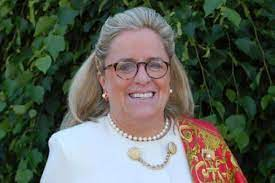Mayor’s Column: April 24, 2023.
“Poems are made by fools like me, but only God can make a tree.” Joyce Kilmer
On this Friday, April 27, the entire nation celebrates Arbor Day.
As commemoration, we plan to plant a new beech tree to replace the one we lost to disease on Beechtree Lane, so named for that venerable and exquisite tree.
In addition, Arbor Day will signal the start of our street tree planting throughout the Village.
In the spirit of Arbor Day, the Village will redouble efforts to plant trees lost in the past decade due to storms, as well as trimming and feeding those that survived. We recognize they are our most valuable natural resource as the benefits of trees make them the best bang for the buck in preserving the character and health of our Village.
My colleagues on the Village’s Green Committee feel exactly the same way, and they are writing their column this week about the importance of what truly are the lungs of the planet.
Our double mention just emphasizes the critical need for healthy trees in our Village.
As point of history, the first Arbor Day originated in Nebraska City, Nebraska on April 10, 1872 when an estimated 1 million trees were planted in one day.
The brainchild behind this Herculean effort was J. Sterling Morton, a westward pioneer born in Detroit. Morton was a journalist who soon became editor of Nebraska’s premier newspaper, which became his voice to advocate for families and civic organizations to plant the trees/species they so missed from their home states.
According to accounts, Nebraska City celebrated Arbor Day with grand parades and school children planting and then caring for the trees they planted.
In 1885, it became a legal holiday in Nebraska, and other states soon followed with 45 of them celebrating by 1920. The first documented Arbor Day worldwide was celebrated in the Spanish village of Mondonedo in 1594 when the entire community planted lime and horse chestnut trees and today 44 other nations worldwide celebrate the holiday.
On April 15, 1907, President Theodore Roosevelt issued the, “Arbor Day Proclamation” to the school children of the United States emphasizing the importance of trees and forestry.
Forty nations now have national observances.
We all know that trees are essential as a food source, harboring wildlife, lumber, pulp and take in carbon dioxide and release oxygen, but did you know that a single acre of trees could produce enough oxygen for 18 people for an entire year and absorb the same amount of CO2 produced by 26,000 car miles? Staying in the energy realm, just three trees placed strategically around a single-family home can cut summer air conditioning needs by 50%.
Trees placed in commercial areas can lower temperatures in a parking lot and break up the black top “heat islands.”
The net cooling effect of just one young healthy tree is equivalent to 10 room size air conditioners operating 20 hours a day.
In all facets of the quality of life, the importance of a healthy tree stock cannot be overstated.
Trees absorb odors and pollutant gases and filter dirty particles out of the air.
Shade from trees also slows water evaporation from thirsty lawns and parks. Trees reduce runoff by breaking rainfall, thus allowing the water to float down the trunk and into the earth below the tree. The slow runoff also prevents erosion by holding soil in place.
Of great importance is the role they play on school property and playgrounds as trees reduce UV -8 exposure by almost 50%, providing protection to children playing outdoors.
Trees on private property also produce great monetary benefit. Studies have demonstrated that 10 to 23% of the value of a residence is based on its tree stock.
More intangible, but so important nonetheless, is the value of trees in marking the seasons, calming a stark landscape, acting as neighborhood landmarks and points of identity. They also serve as symbolic links to the past when other connections have long since gone.
Recent studies also show that being around trees can have a calming effect, relaxing brain waves, and reducing our heart rates while offering our eyes visions of beauty. These varied and truly amazing benefits are why we think celebrating Arbor Day is so important and we encourage you as a family to plant a tree, native shrubs or even a patio container garden this weekend as according to an old Chinese proverb, “The best time to plant a tree was 20 years ago. The second best time is now.”





